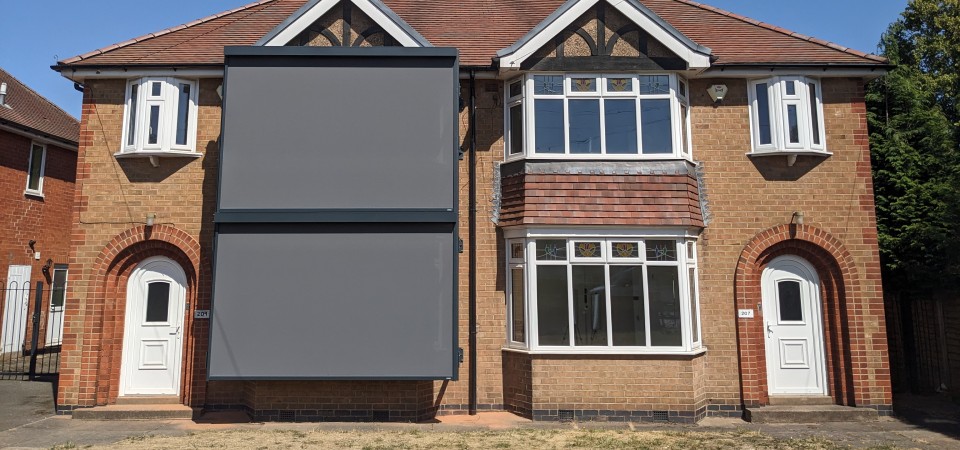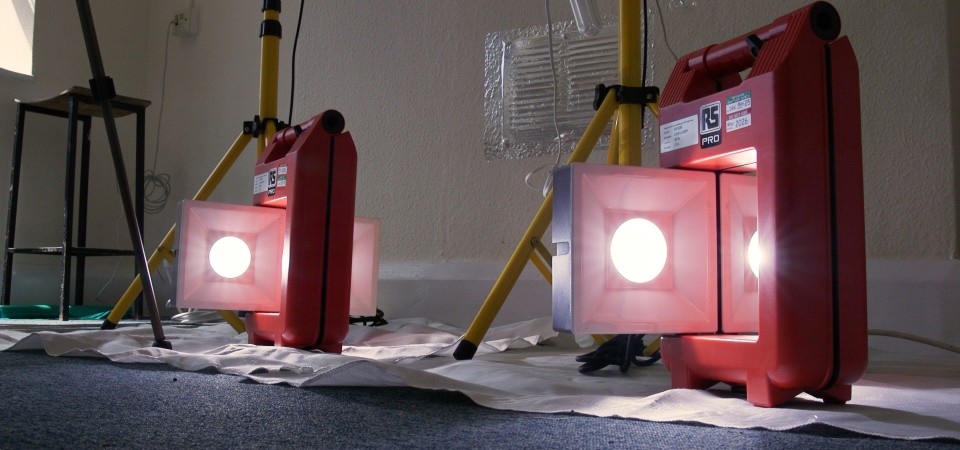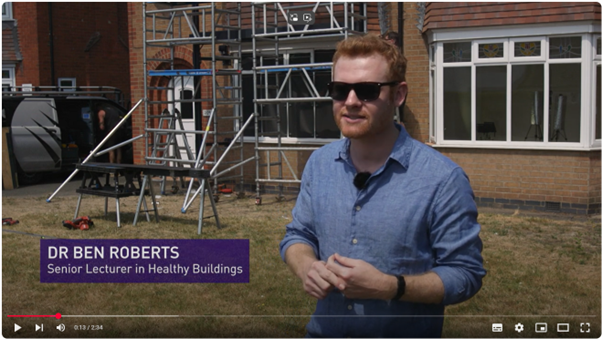The team said that around 20% of homes in the UK are already overheating and the problem is only going to get worse as climate change continues.
At Loughborough’s matched-pair test house facility, researchers are trialling practical solutions to keep homes cooler, such as an external shading system (pictured below) that blocks out the sun’s heat before it gets inside.
The facility includes two identical, full-size houses built side-by-side. One is left unshaded, while the other is fitted with different systems or materials, such as shading on the outside of windows.
Because the houses are the same, any difference in temperature or comfort can be directly linked to what’s being tested.

“We’re looking at how we can adapt our homes to stay cooler in hot weather, without relying on air conditioning,” said Dr Ben Roberts, an expert in indoor environments and building performance.
“UK homes are designed to keep heat in during winter – this also helps block heat from coming into the house through roofs and walls during summer too. However, it’s a problem when the sun’s heat enters through unshaded windows. Once the heat gets in, it gets trapped.”
The team uses sensors placed throughout both houses to monitor temperature, humidity and airflow.
They’ve also installed ‘heat boxes’ (pictured below) – devices that replicate the warmth given off by a human body or household appliances – to better understand how real people would feel in these spaces.
“We place them around the house, and it just replicates the same energy of a human body,” said PhD researcher Niloo Todeh Kharman. “It measures temperature, humidity, and velocity and any parameters that we need for assessment of thermal comfort inside the house.”

But this research is about more than comfort, said Niloo. Overheating in homes is a real risk to health, particularly for older adults, young children, and those with existing medical conditions.
“Anyone who’s had a sleepless night in a hot bedroom knows how draining it is,” she said. “Now imagine that every night for a week.
“Sleep deprivation increases your risk of illness, affects your ability to work, and can have longer-term consequences for things like heart health and even dementia.”
Dr Roberts added that many people are unknowingly making their homes hotter by opening windows during the day.
He said: “It might feel instinctive to let fresh air in – but if the air outside is hotter than inside, you’re just heating your house up.
“You’re better off keeping windows closed during the day, drawing light-coloured curtains or blinds on the sunny side, and only opening windows when it’s cooler in the evening.”
Dr Roberts added that night-time ventilation is one of the most effective ways to cool homes – but people are often reluctant to leave windows open due to noise, air pollution, or security concerns.
“It’s something we need to look at more seriously,” said Dr Roberts. “We might need better window designs – things like secure grilles or automated systems – so people can cool their homes safely overnight.”
The project has support from several industry partners – British Blind and Shutter Association (BBSA), Caribbean Blinds, Guthrie Douglas, Hunter Douglas, James Robertshaw, Serge Ferrari and Weinor – who are providing different materials and products for testing.
The aim is to find affordable, low-energy ways to keep homes cool, something that will be increasingly important as summers get hotter.
The project is supported by The Chartered Institution of Building Services Engineers (CIBSE).
This article has been published as part of the PR Environment campaign. Further information on the campaign can be found in the launch press release.
ENDS
